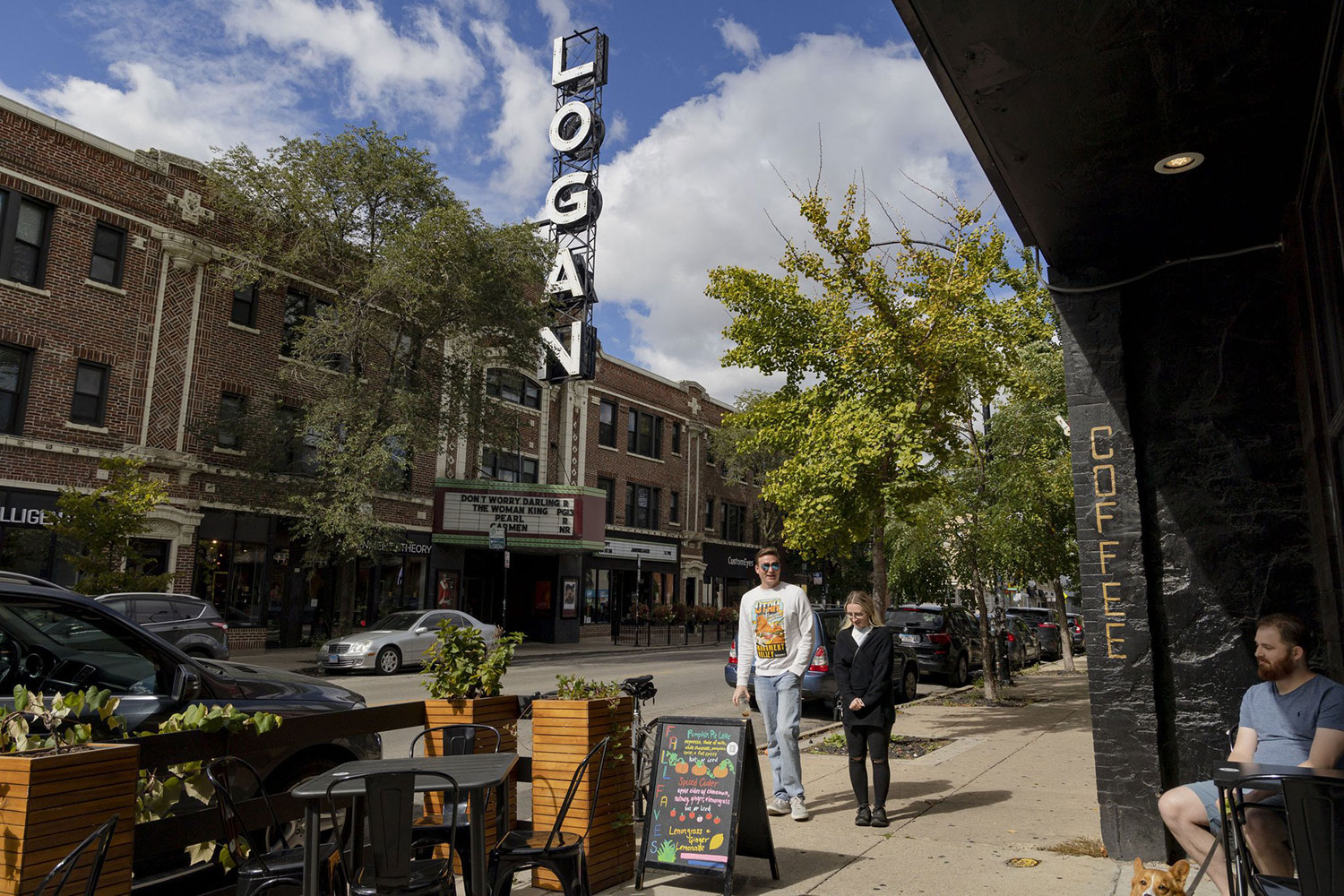The story of Chicago’s post-World War II white flight is well known. In 1950, almost every neighborhood outside the South Side Black Belt was more than 90 percent white. Within twenty years, neighborhoods such as East Garfield Park and Greater Grand Crossing were 90 percent Black.
Since the 1990s, though, many Chicago neighborhoods have been experiencing reverse white flight. The ’90s were a decade in which the middle and upper classes began taking a renewed interest in urban living. The neighborhoods that whites have been reoccupying, though, are not the same as the ones they abandoned. And the whites who’ve been moving in are not the same as the ones who moved out.
Let’s start by looking at the community areas where the percentage of white residents increased by a significant amount between 1990 and 2020.
| Neighborhood | 1990 (%) | 2020 (%) |
| Uptown | 38 | 52 |
| Lincoln Square | 60 | 64 |
| North Center | 63 | 74 |
| Lake View | 74 | 76 |
| Logan Square | 26.7 | 52 |
| West Town | 27.4 | 62.7 |
| Near West Side | 18 | 43.6 |
| Lower West Side | 10.5 | 22.2 |
| Humboldt Park | 6 | 9 |
| Near South Side | 0.5 | 51.3 |
| Douglas | 5.2 | 10.6 |
| Kenwood | 19.6 | 20.9 |
| South Shore | 1.8 | 2.9 |
| Edgewater | 51.1 | 53.5 |
The post-war white flight neighborhoods were far from the Loop, and off the ‘L’ system’s transportation grid. Avalon Park, for example, was 99.9 percent white in 1950, and is less than 1 percent white today. Whites who were forced to remain in Chicago, to meet municipal job residency requirements, isolated themselves in suburban-style neighborhoods at the city’s fringes: Beverly, Mount Greenwood, Norwood Park, and Edison Park still have white populations between 56 and 82 percent.
The reverse white flight neighborhoods have the opposite profile: they are close to downtown and have easy access to public transportation. The incoming whites are also different from the outgoing whites. Those who left were blue collar and ethnic. North Lawndale was once a Jewish neighborhood, as is evident from synagogues converted into COGIC churches. Archer Heights was Polish and Lithuanian. It still has the Polish Highlanders banquet hall. The reverse white flight population is college educated, and either from the suburbs or from other states entirely. The neighborhoods listed above have among the highest education levels and the lowest percentages of native-born Illinoisans in the city. Stosh and Stella moved out. Brian and Jen moved in.
(Lincoln Park is not on the list because it began losing its Latino population a few decades earlier, in the 1970s. Lincoln Park pioneered reverse white flight. According to Daniel Kay Hertz, author of The Battle of Lincoln Park, the neighborhood was “the first place that gentrification really happened in Chicago, in the way that we think of it now…it’s the whole story of these middle-class rehabbers coming in and changing the neighborhood.”)
When whites leave a neighborhood, it’s called white flight. When whites occupy a neighborhood, it’s called gentrification. According to an analysis of American Community Survey data by WBEZ, the “five ZIP codes where the median household income increased by 30% or more” in the 2010s were mainly in reverse white flight neighborhoods: “Pilsen, Logan Square, the Lower West Side, Noble Square, Irving Park and the Near South Side. All five ZIP codes gained white residents while losing Latino population.”
“It’s just a continuation of gentrification along the same lines as it was before, since 1990, but that is accelerating now,” John Betancur, a professor of urban planning and policy at the University of Illinois Chicago, told the radio station. “The people that live in those central neighborhoods [near downtown] are being displaced either because they cannot afford increases in rent, or because they are homeowners and they cannot afford the increases in property taxes.”
Along with economic changes have come political changes. The Near South Side went from .5 to 51.5 percent white as the South Loop was redeveloped. Even Mayor Richard M. Daley moved there, to a Central Station townhouse. (Our last three mayors have lived in reverse white flight neighborhoods.) The 2nd Ward had been represented by a Black alderman since 1915, when it elected Oscar De Priest. In 2007, though, Italian-American Bob Fioretti defeated incumbent Madeline Haithcock. On the Northwest Side, Logan Square and West Town (which includes Wicker Park) both doubled their white populations, at the expense of Latinos. That helped Will Guzzardi, a champion among young white progressives, who migrated to Chicago from North Carolina by way of Brown University, defeat state Rep. Toni Berrios, daughter of local Puerto Rican machine boss Joe Berrios. Next year, the Near West Side, another neighborhood that has doubled its white population, is getting the 34th Ward from depopulated West Pullman. The favorite to win the seat is Bill Conway, son of a billionaire investor.
Where will the white folks move next? I’m sure real estate investors are trying to predict that. The reverse white flight neighborhoods are near the lakefront, and east of Kedzie Avenue. Given those parameters, I’d bet on Douglas, Humboldt Park, and McKinley Park. Douglas and Humboldt Park have experienced small increases in their white populations, and both are adjacent to neighborhoods that have seen much larger increases. So is McKinley Park, which has a busy ‘L’ stop and is, according to a Southwest Side community organizer, seeing an influx of “white Millennials.” Ethnic succession will always be part of the Chicago story. It goes in many directions.



